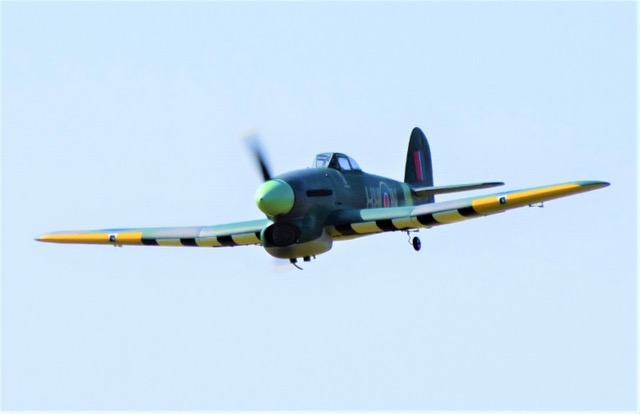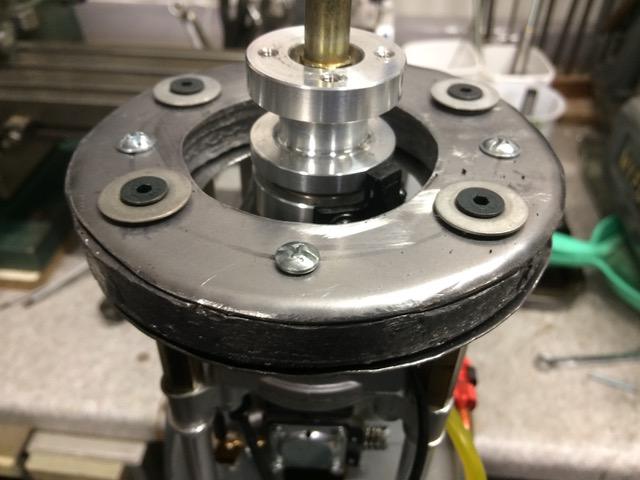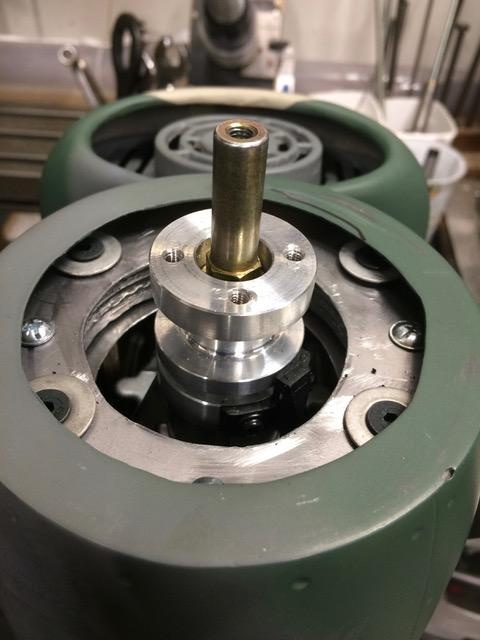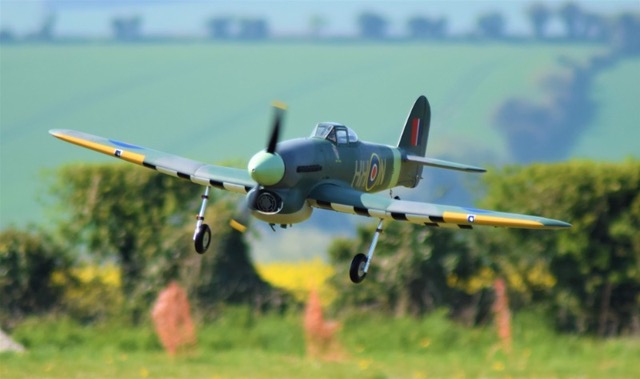|
Christchurch and District Model Flying Club |
|
TYPHOON! By Kevin Ross |
|||
 |
|||
|
Warbirds like the Spitfire, ME 109 or Mustang are popular choices but for me have 2 disadvantages as scale subjects 1. Inability to totally cowl in an IC engine 2. They all suffer from nose over on less than perfect landings or grass strips due to rearward positioned U/C So for me not only does the Hawker Typhoon address both the above concerns but I think the profile presents really well in the air. Initially I thought about building from the Brian Taylor plan but came across this now discontinued YT international ARTF on the BMFA adverts with only 3 flights. Exact same size so probably copied from B.T’s plan at 73” span. The model is powered by a DLE 35cc petrol engine and swings a 19 x 10 wood prop at approx 7K RPM On collecting the model I realised why only 3 flights. The instructions weight had grown from 15lbs to about 22lbs So drastic action was needed. The builder had added nearly 3 lbs lead ballast to the engine crankcase and 2 x 5s sub C NmHi cells for Rx & Electronic ignition to obtain the correct C of G. U/C retraction is pneumatic by a servo operated valve. The long heavy legs sweep forward during extension /aft during retraction which induces an equivalent moment change of approx 4ozs plus / minus 4”. Of course this works in the models favour providing nose heavy change for landing /tail heavy in flight. The first task was to melt and recast the lead into a doughnut shape and mount on extended outriggers immediately behind the spinner. This has allowed me to remove 1lb lead and both replace the original batteries with small Life cells. Total saving about 2.75lbs (On the left, the new lead doughnut, and on the right, showing how close it is to the nose of the plane, the model, looking from directly above. - Ed)
Unfortunately on the first take off I lost one of the U/C doors then on landing, the second twisted and acted like an airbrake causing an excursion into long grass and loss of the second U/C door. These have now been refitted with securing screws and grub screws locating in dimples in the U/C legs to prevent twisting. Having run out of spare channels, I’ve activated working landing lights operated by micro switches on the flap servos Also, on the last spare channel, I’ve combined the petrol engine electronic ignition switch with some clever geometry on the carburettor choke lever operated by a 3 position Tx switch to provide Choke ON with Ignition OFF to prime the engine Choke ON with Ignition ON to start the engine Choke OFF with Ignition ON for normal flight So I have activated 11 functions from a 9 channel wireless set. Landing is not for the faint hearted - It requires full flap and high idle engine power on to the deck for a rewarding and smooth roll out.
|
|
[Home] [Chairman's Chatter] [Beaufighter] [Typhoon] [Lest I forget] [Spot the diffeence] [Catch-Up] [TopFlite Spitfire] [Remove before use?] [Flying Site] [Tailpiece] |


